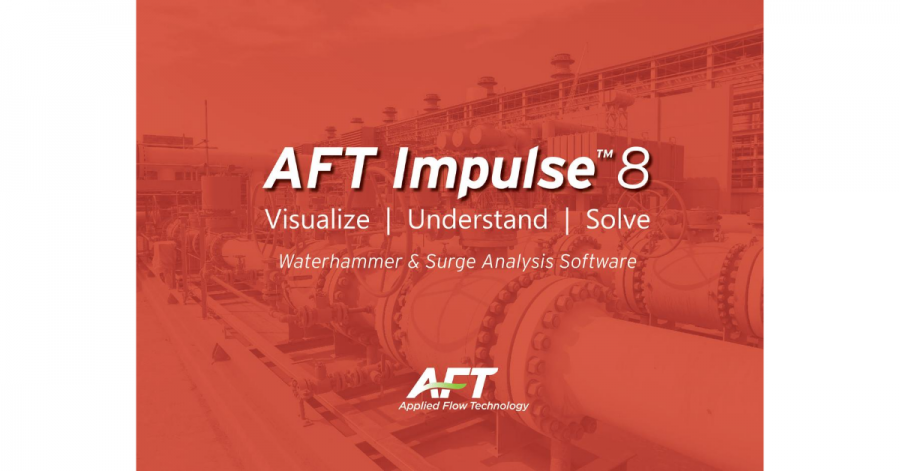Waterhammer analysis is a hot topic among design engineers. This week, Applied Flow Technology President, Trey Walters, P.E., announced the release of 8, AFT’s advanced waterhammer analysis tool which engineers around the world use to design safe and dependable piping systems.
“AFT Impulse was originally released in 1996 and was the world’s first graphical waterhammer simulation tool for Windows. This heritage of helping engineers is again on display in AFT Impulse 8,” says Walters, “Numerous usability enhancements are offered which makes engineers better equipped than ever to tackle demanding waterhammer transient design and operational tasks.”
With 30 new and enhanced features in AFT Impulse 8, here are the top 5 engineers will want to use:
- Multi-Scenario Comparison: Data can be compared between multiple scenarios to show changes made
- Single or multiple transient Force Sets can be defined directly from the Workspace
- Multi-level undo and redo on the Workspace
- New capability to model unsteady friction
- New pump four-quadrant curves added
- Forces can be shown on the Visual Report
Find the complete list of new features or visit the AFT Impulse product page: https://www.aft.com/products/impulse.
Why will engineers want to upgrade?
AFT Impulse 8 has a number of improvements that help it stand out from previous versions of Impulse. Most importantly, AFT Impulse 8 adds the ability to graph output data from multiple scenarios at a time. This feature makes it much simpler for the engineer to understand the effects a changes to the system have.
AFT Impulse 8 also includes two tools to help the engineer better understand their system. The Scenario Comparison tool allows the engineer to easily determine differences in input data between any two scenarios, making it easier to keep track of changes made to the model and system. The Model Diagnostics tool performs a check of the model to help flag potential issues in the model. Checks are based on common mistakes seen by our technical support team, and are intended to help prevent the engineer from making modeling mistakes that may have a large impact on their system.
Why would engineers want to spend time to incorporate AFT waterhammer analysis into their design process?
A waterhammer analysis is often done as a reactive rather than proactive measure. It’s difficult to know how a system will react during the design process, and it’s easy to incorporate rules-of-thumb for things like valve closures during operation and pipe thicknesses during system design and construction. These two factors commonly lead to engineers believing that a waterhammer analysis is unnecessary.
However, many systems see waterhammer effects during normal operation. Operators and engineers try to address individual issues as they occur, until eventually they decide a full waterhammer analysis is needed.
At this point, large amounts of time and money have already been invested into waterhammer mitigation, and the changes proposed from a waterhammer analysis typically cost more as retrofits than they would have as part of the original design.
Performing a waterhammer analysis during the design process may add time and money initially, but it will save even more time and money by reducing repairs in the future along with preventing down-time, leading to increased productivity. Tools like AFT Impulse allow engineers to efficiently incorporate a waterhammer analysis directly into the design process.
Want to learn more about the new AFT Impulse 8 features? You can check out this on-demand webinar, here: https://www.youtube.com/watch?v=T_3LkvWb4So&feature=youtu.be




